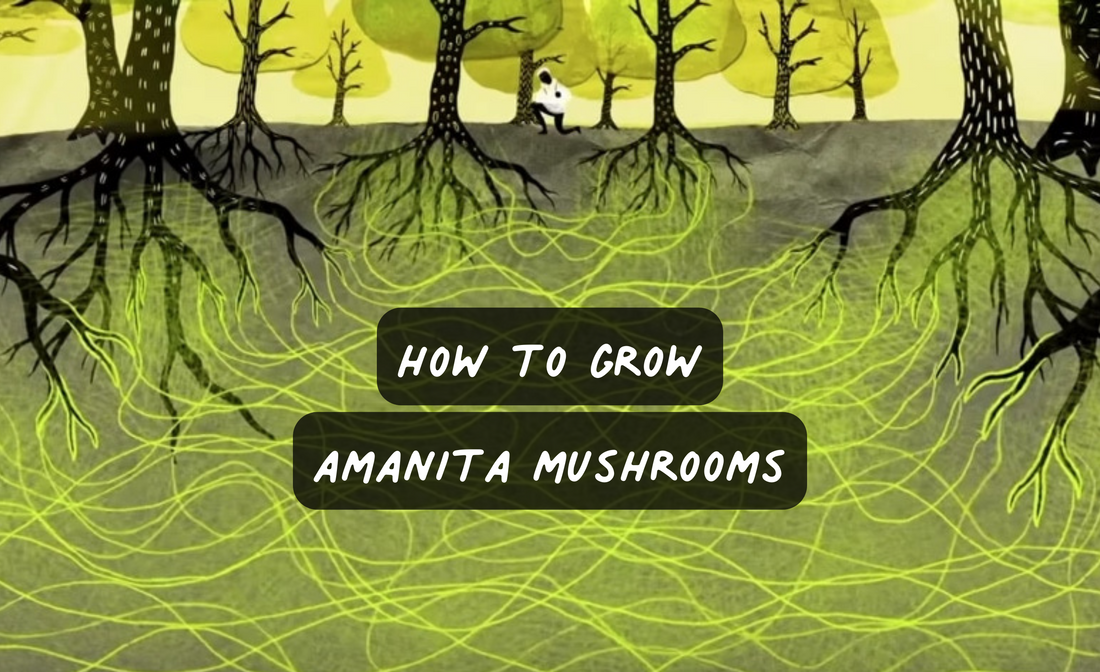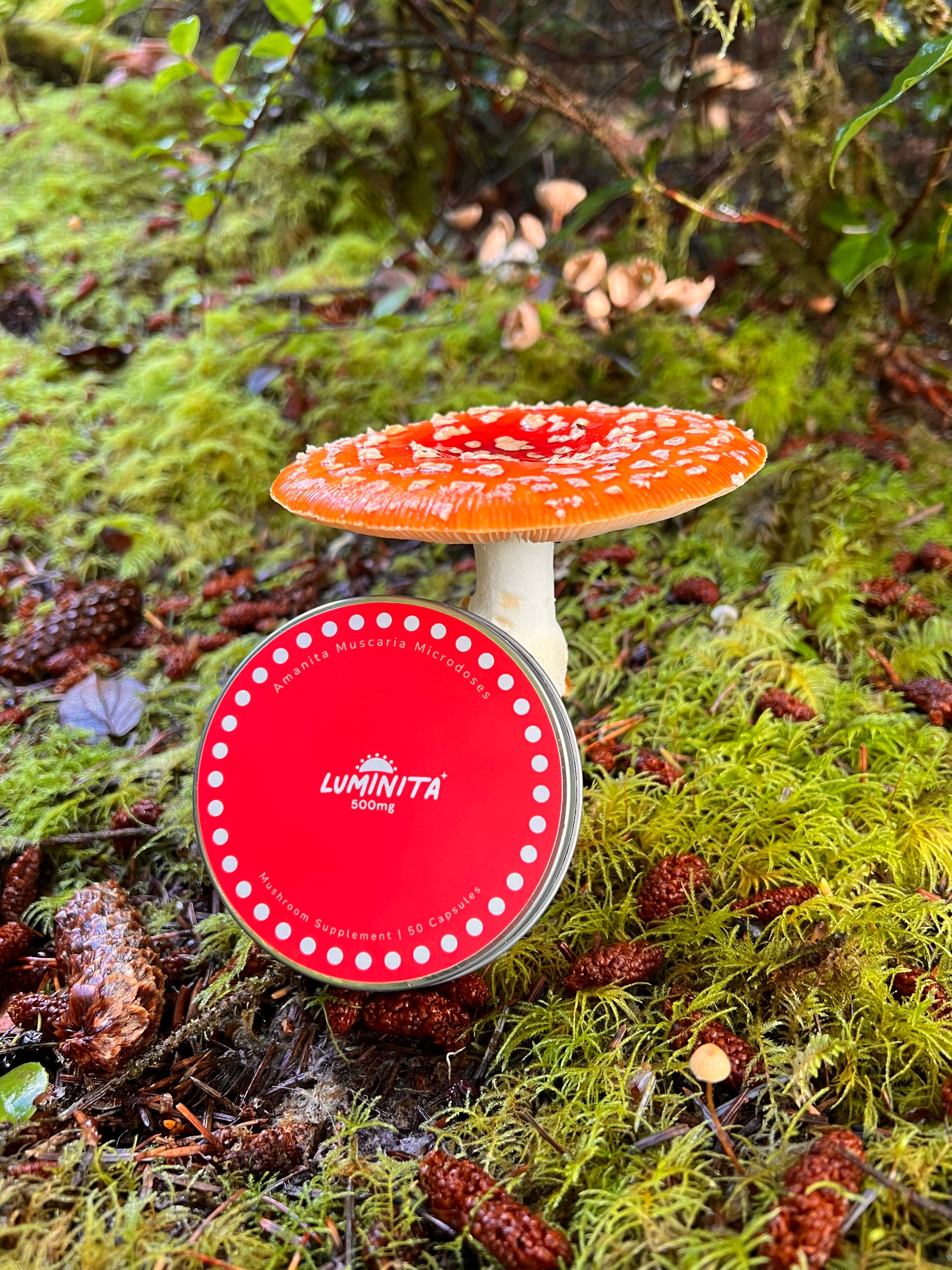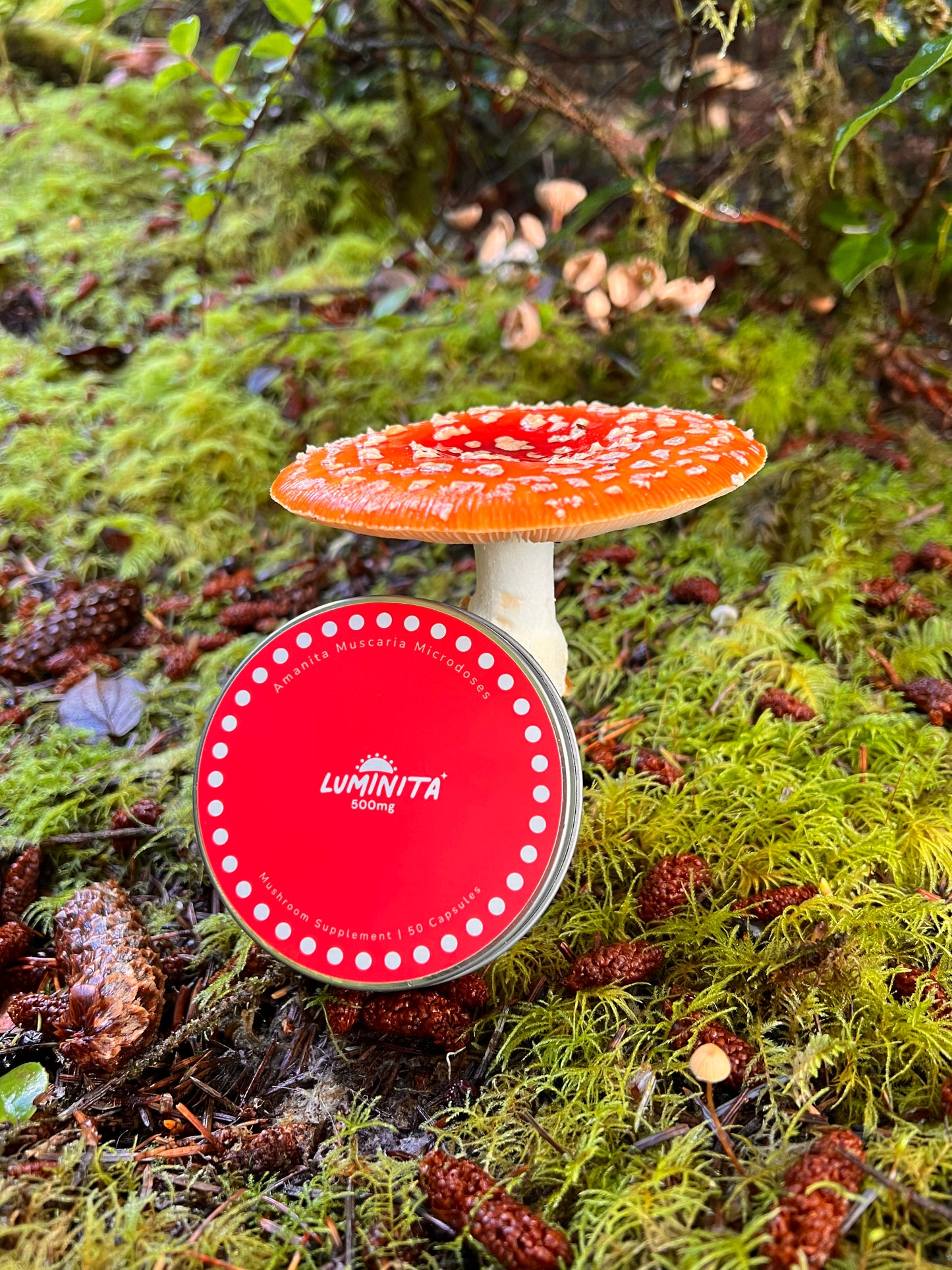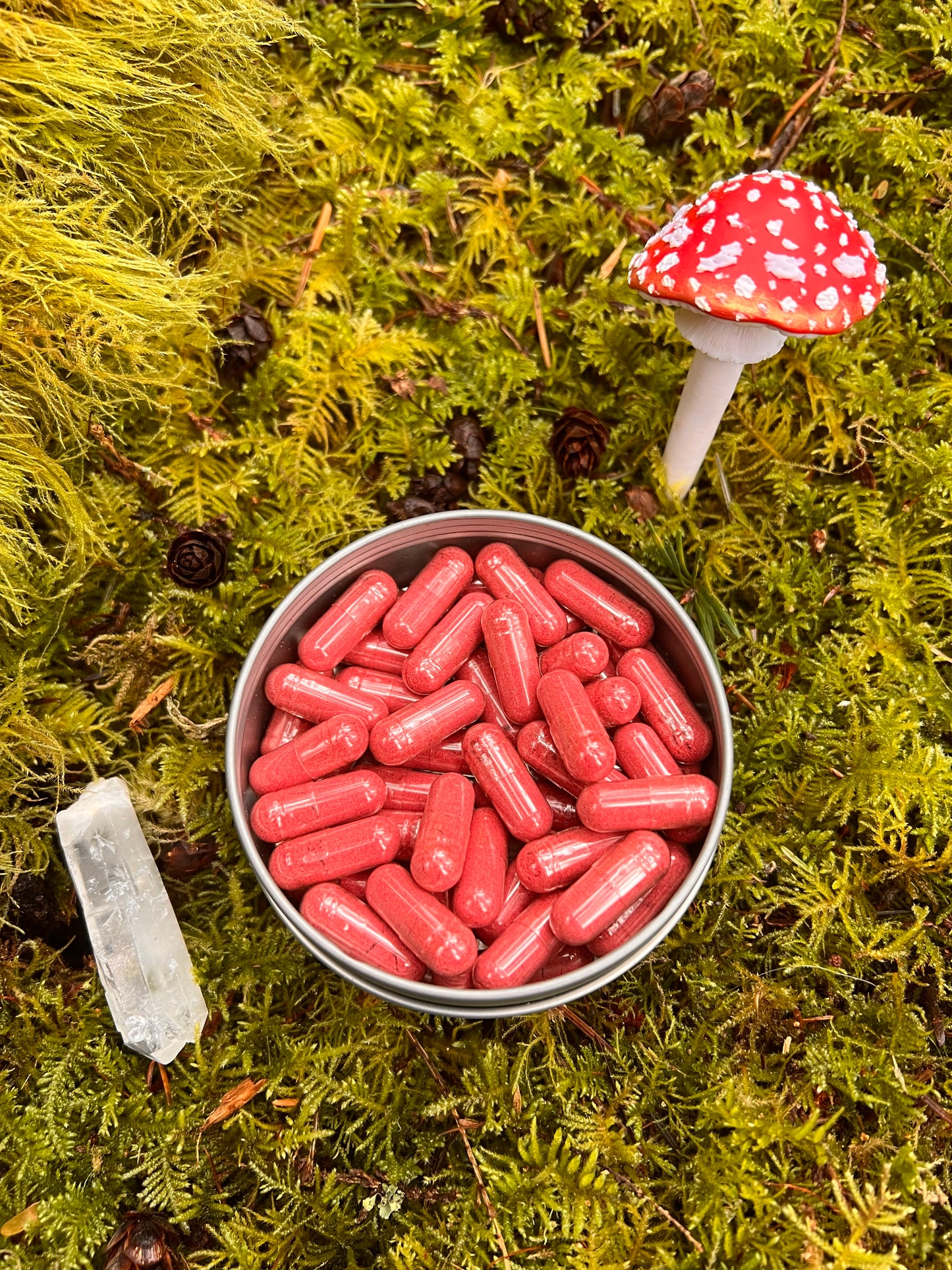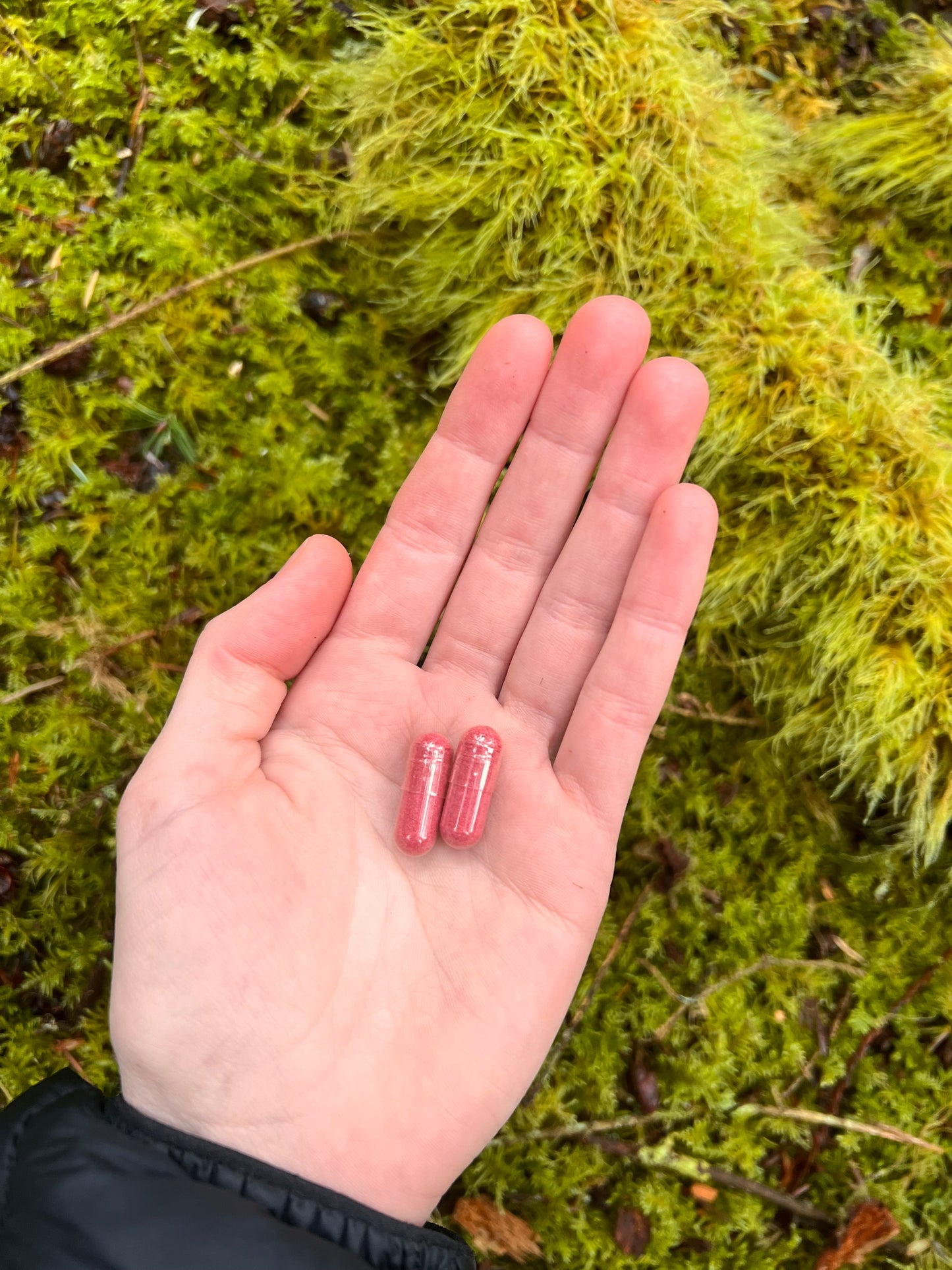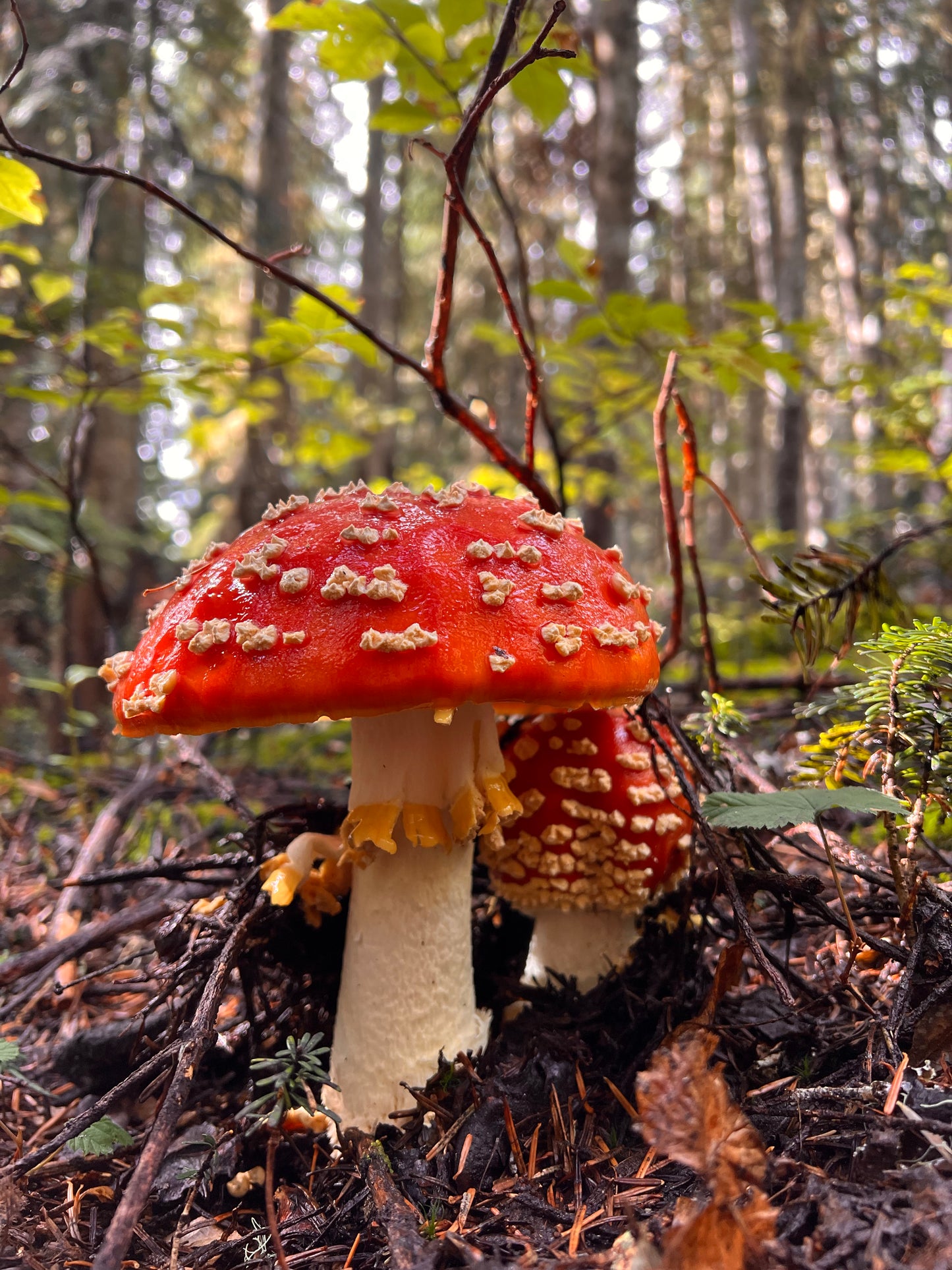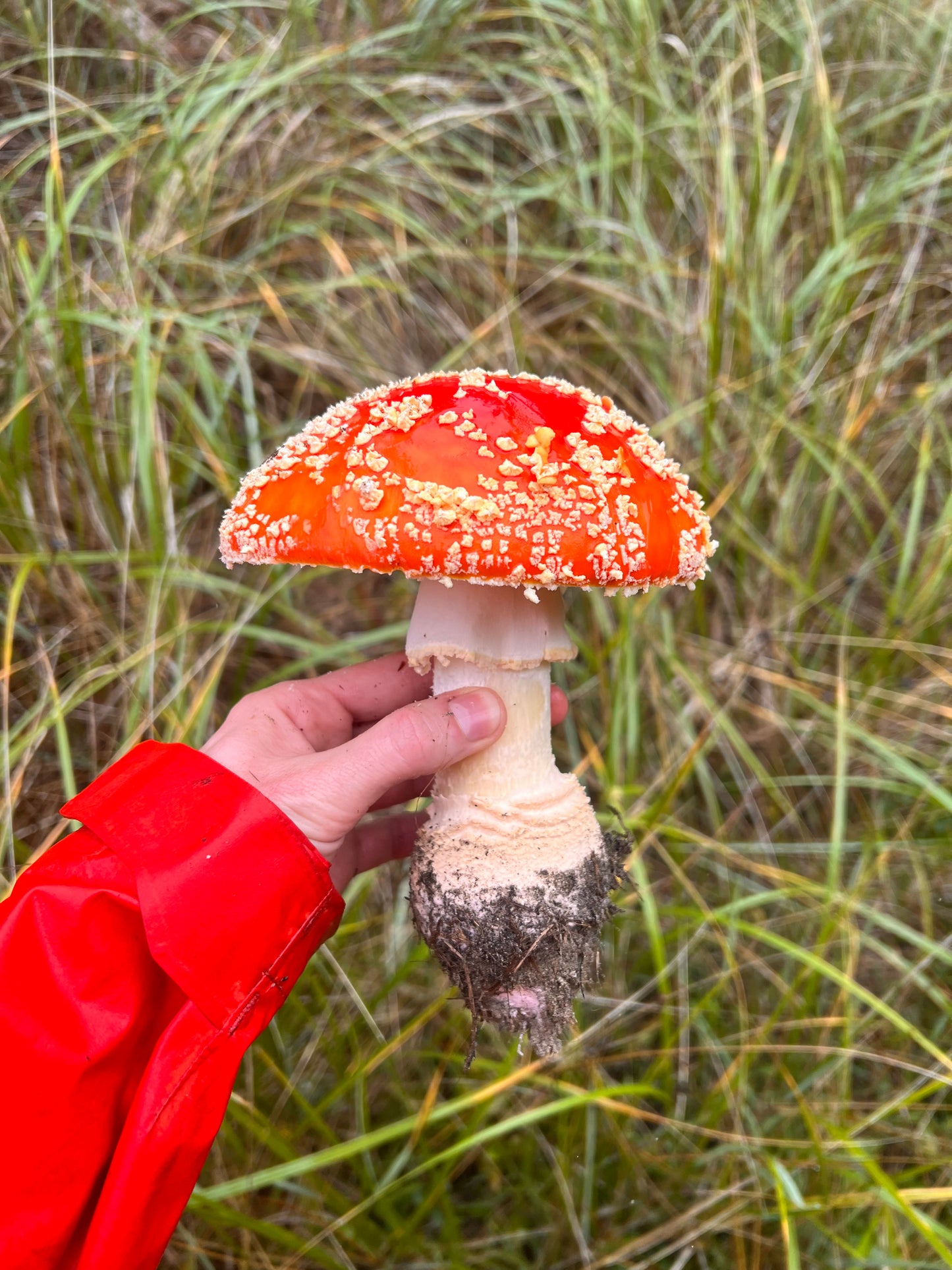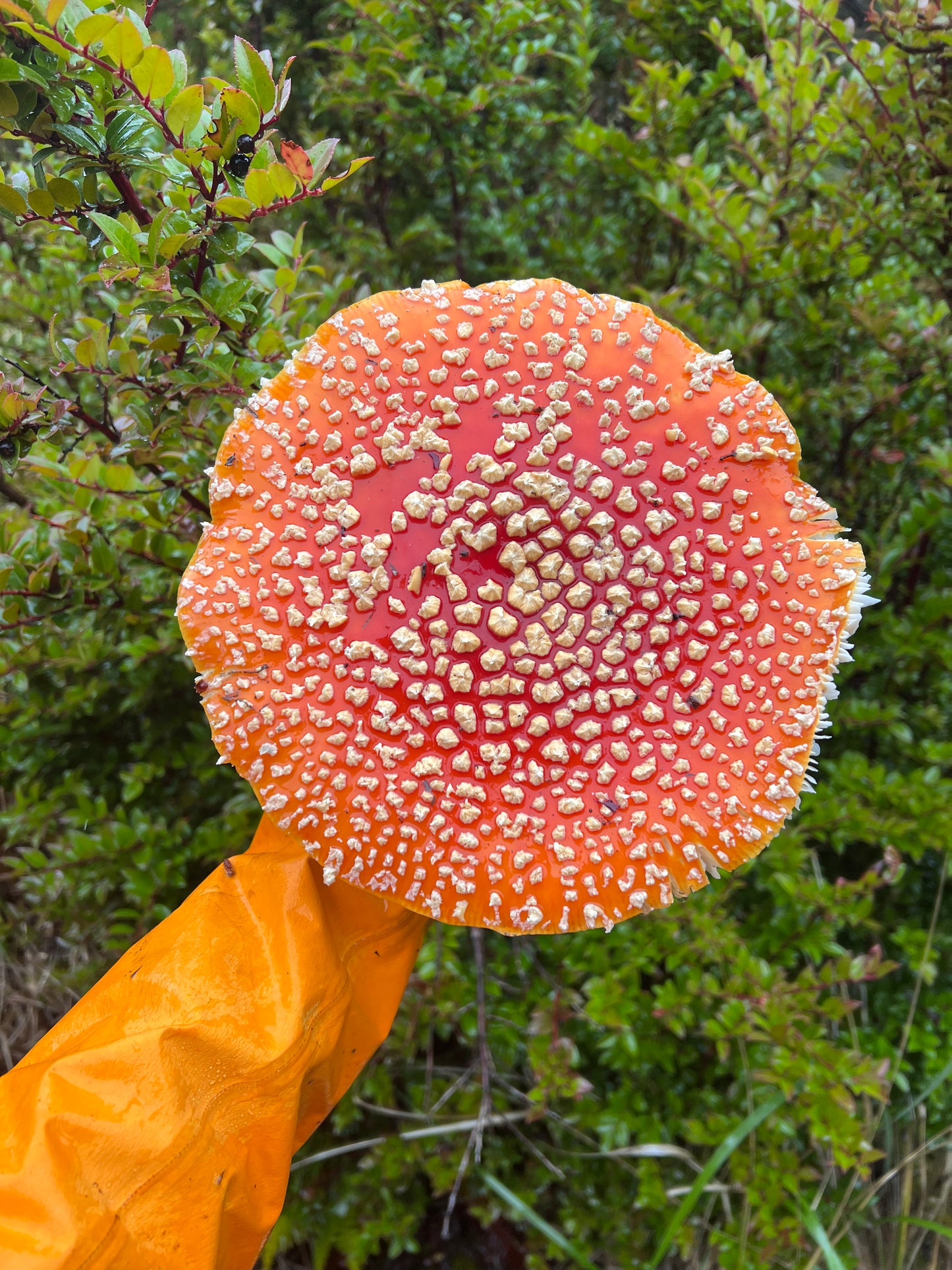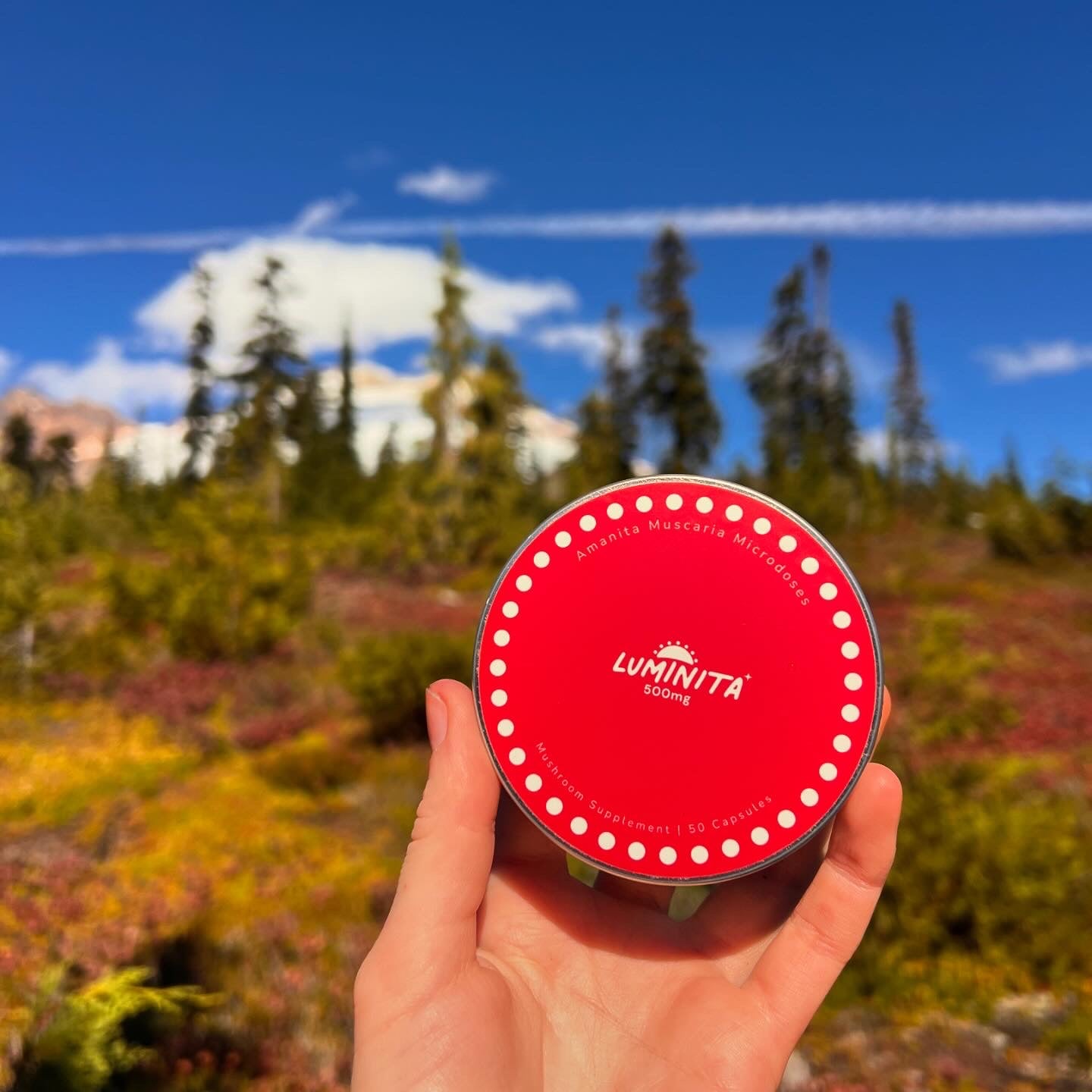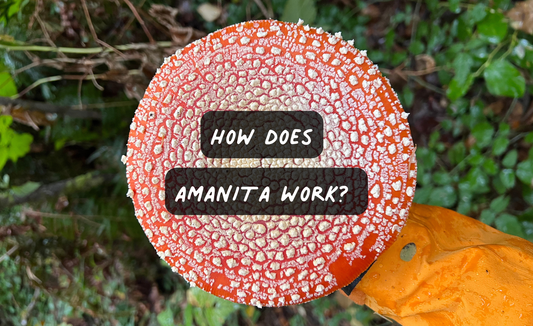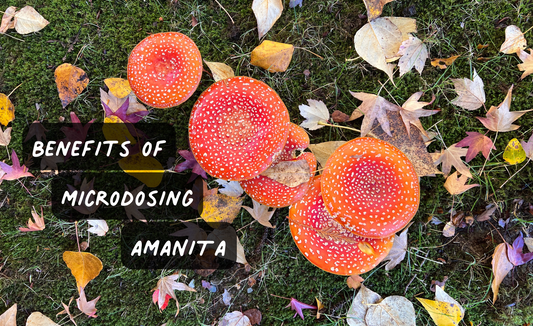Journal Contents:
- How does Amanita grow?
- Different types of mushrooms and how they grow.
- What type of mushroom is Amanita?
- How truffles are grown.
- How chanterelles are grown.
- So if you can't grow them, where can you find them?
How does Amanita grow?
Though often confused with magic mushrooms, amanita muscaria is in fact a much different mushroom. One of the main differences being the way they grow.
While traditional magic mushrooms can be grown at home with a tub and the right soil, amanita cannot.
The reason being is that amanita forms a symbiotic relationship with the roots of trees. Meaning that to grow amanitas, you need a tree to accept the amanita mycelium into its roots, otherwise it will not be able to grow into a mushroom.
Unlike plants which can readily be grown with a few simple ingredients: soil, light and water, mushrooms are much different, and a lot weirder.
The different types of mushrooms and how they grow.
There are in fact three different varieties of mushrooms, and each has their own requirements for growth.
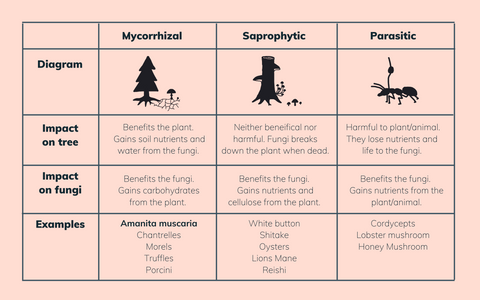
- Mycorrhizal: These are the mushrooms that form a symbiotic relationship with plants. The mycelium of these mushrooms grow either inside (endomycorrhizal) or outside (ectomycorrhizal) the roots of plants. The mycellium gets sugars from the host tree, in return, the mycellium returns nutrients, such as nitrogen and phosphorous that the tree is lacking. They cannot grow without this relationship, and so they must be foraged by hand in nature.For this reason you do not often find these mushrooms in your local grocery store. Examples include: chanterelles, truffles, and porcini.
- Saprophytic: These are decomposer mushrooms. They grow on dead trees or wood chips and release enzymes or acids to break down the wood into smaller and smaller pieces. They then consume the broken down nutrients. Most of the mushrooms you find in stores are saprophytic mushrooms because it’s possible to farm them. With the right moisture and substrate, anyone can grow these mushrooms at home, and many do! Examples: Shiitake, white button, and oysters.
- Parasitic: These mushrooms take advantage of the host plant (or animal!) and take nutrients from them without giving anything in return. Parasitic mushrooms are the least common form of fungi in nature, most creating neutral or beneficial relationships with other species. An example of a parasitic fungi is cordyceps. Once their spores find their way into an insect, they take control. They grow fibrils along the insect's skeleton and force them to climb to the top of a plant to die. This crude habit is a way for the cordyceps fungi to spread their spores as far as possible.
What type of mushroom is Amanita?
Of the three varieties: Amanita muscaria can be classified as an endomycorrhizal mushroom.
It specifically likes to form relationships with birch and pine trees, though it can be found making relationships with many other species as well. So to grow amanita mushrooms, you’re going to need some trees and some patience.
How do you Grow Mycorrhizal Mushrooms?
So you have taken it upon yourself to grow one of the most difficult types of mushrooms. If so, you're going to want to know how previous travelers have successfully grown mycorrhizal msuhrooms.
Previous Amanita attempts:
Previously, people have attempted to grow amanita muscaria in a lab setting with agar. And though they have succeeded in growing the mycelium (the "plant" of the mushroom), no one has yet been able to get the mycelium to push up a mushroom.

credit: Funguys gourmet
Other mycorrhizal mushroom attempts:
The good news is people have successfully grown a few other mycorrhizal mushrooms. You may have heard of one of them before: the humble truffle. Most truffles are grown in Europe in symbiosis with Oak trees.
Another mushroom people claim to have successfully grown in their backyard is the golden chantrelle mushroom.
By looking at how other mycorrhizal species are grown, you may be able to work out how to grown ruby amanitas in your backyard as well.
How Truffles are Grown
The good news is that truffles are also a mycorrhizal mushroom and people in europe have successfully been able to farm them. After years of trial and error, they found that sprouting a seed in water filled with truffle spores and then later plating the trees led to the greatest success rate of having trees that contain truffles in their roots. Unfortunately, it takes at least 10 years to start a truffle farm and the same rate of success has not been found with Amanita muscaria.
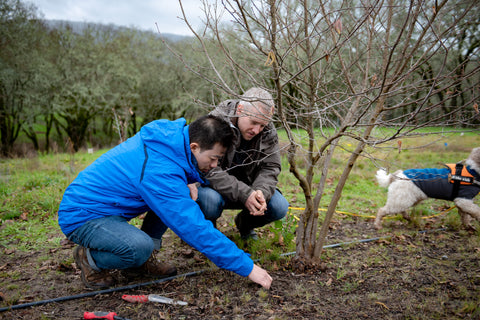 credit: American Truffle Company
credit: American Truffle Company
How Chanterelles are Grown
Another method often employed by those looking to grow chanterelles is to take the water they collect after rinsing the mushrooms and pouring it at the base of a pine tree each day for years. Some people swear they have been able to get host trees to accept chanterelle mycelium into their roots, but actual studies on the success rate of this method are few and far between.
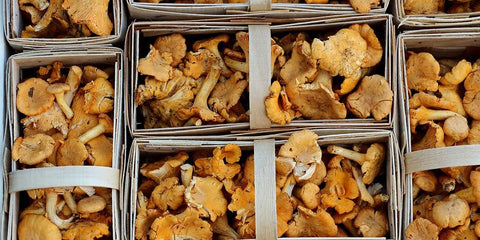
credit: grocycle
With the current difficulty of growing other mycorrhizal mushrooms like truffles and chanterelles and the lack of success of those trying to grow amanitas themselves, those looking to grow amanita mushrooms are looking at an uphill battle. Though the door is open for anyone willing to take on the task themselves.
In the meantime, foraging and buying online are always options.

